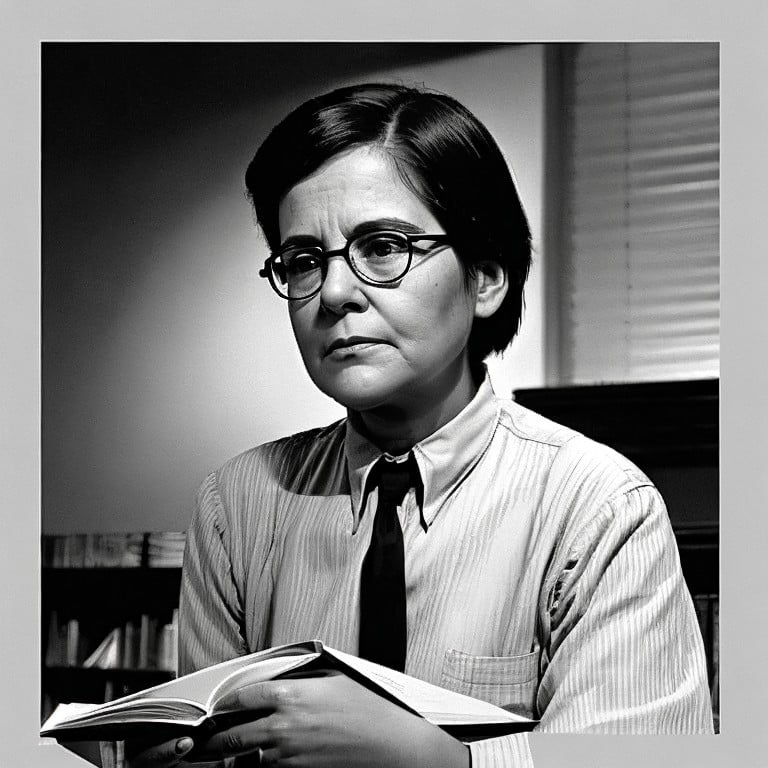Introduction: The Timeless Relevance of ‘To Kill a Mockingbird’
Harper Lee’s To Kill a Mockingbird is more than just a novel; it is a profound exploration of social justice, racial inequality, and moral integrity in American society. Set in the racially segregated South during the 1930s, the novel presents a compelling critique of prejudice and discrimination through the eyes of a young girl, Scout Finch. Her father, Atticus Finch, stands as a beacon of righteousness, defending an innocent Black man, Tom Robinson, in a racially charged trial. The novel’s impact on American literature and civil rights discourse is undeniable. The Library of Congress recognizes To Kill a Mockingbird as one of the most influential works addressing social justice, highlighting its continued relevance in discussions about race and morality.
To Kill a Mockingbird unearths the entrenched racial divides and moral dilemmas prevalent in American society. Themes such as prejudice, inequality, and the loss of innocence resonate profoundly, offering timeless insights into social justice. Despite its setting in the segregated South of the 1930s, the novel’s themes are enduring and universally relevant, shedding light on the inherent biases and struggles against injustice that continue to shape societal discourses today.
The novel’s lasting impact is evidenced by its continued presence in educational curricula and its role in fostering discussions about race and morality. Harper Lee’s masterful storytelling and deep empathy for her characters invite readers to reflect on their own perspectives and biases. The portrayal of Atticus Finch as a beacon of integrity and moral courage further cements the novel’s status as a critical tool for understanding and engaging with social issues.
One of the novel’s most striking themes is its unflinching portrayal of racial injustice. To Kill a Mockingbird exposes the deeply ingrained racism of the American South, where Black citizens are denied fair trials and treated as second-class individuals. The wrongful conviction of Tom Robinson serves as a harrowing reflection of real-life racial prejudices that persisted during the Jim Crow era. According to The Equal Justice Initiative, thousands of Black Americans were subjected to racial violence and legal injustices during this period, reinforcing the novel’s powerful commentary on systemic discrimination.
Historical Context and Setting
Harper Lee’s ‘To Kill a Mockingbird’ is set against the backdrop of the 1930s in the fictional town of Maycomb, Alabama. This historical period, marked by the Great Depression, deeply influences the socio-economic conditions and the overall mood of the novel. The economic hardships faced by the American populace during the Great Depression create a pervasive sense of desolation and struggle, impacting every strata of society, from the Finch family to the Ewells and beyond.
Additionally, the South in the 1930s was governed by segregation laws, also known as Jim Crow laws, which enforced racial separation in all public facilities and interactions between white and Black communities. These laws played a crucial role in shaping the setting of Maycomb, establishing an environment where racism was not only prevalent but legally sanctioned. This segregation is a fundamental component that shapes many characters’ attitudes and actions, influencing events in significant ways throughout the novel.
Atticus Finch is not just a character in To Kill a Mockingbird—he is a symbol of moral courage and integrity. His unwavering commitment to justice, even in the face of overwhelming societal opposition, makes him one of literature’s most revered figures. Through his defense of Tom Robinson, Atticus teaches his children, and readers alike, the importance of empathy, fairness, and standing up for what is right. His influence extends beyond fiction, as Harvard Law School discusses his role in shaping legal and ethical debates in American jurisprudence.
By setting ‘To Kill a Mockingbird’ in this era, Harper Lee not only reflects the harsh realities of the time but also challenges readers to confront the deeply ingrained social issues of racism, economic disparity, and moral integrity. The historical context of the 1930s is integral to understanding the complexities of the characters and the gravity of the events that unfold in the story, offering a nuanced exploration of societal values and injustices.“`html
Racial Injustice in Maycomb
‘To Kill a Mockingbird’ by Harper Lee serves as a profound exploration of racial injustice, particularly epitomized through the trial of Tom Robinson. The novel sets the stage in the fictional town of Maycomb, a microcosm of the pervasive systemic racism endemic to many American communities during the 1930s. Through Tom Robinson’s trial, Lee illustrates how deep-seated prejudices and discriminatory practices are entrenched within both the legal and social systems.
Tom Robinson, a Black man falsely accused of raping a white woman, Mayella Ewell, embodies the gross miscarriages of justice proliferated by systemic racism. Despite compelling evidence proving his innocence, the all-white jury convicts Robinson, starkly showcasing the bias woven into the fabric of Maycomb’s legal proceedings. The trial unfolds not as a quest for truth but as a predetermined conviction shaped by racial prejudices, reflecting the inherent inequalities in the judicial system.
Beyond the courtroom, the racial divide permeates every layer of Maycomb’s society. The preconceptions harbored by the townspeople influence their interactions with one another, driving social stratification. The community’s deeply ingrained racism manifests in the characters’ lives and decisions, most prominently observed in the attitudes towards Atticus Finch, who defends Robinson. Atticus’s stand for justice and equality subjects him and his family to scorn and alienation, underscoring the societal pressures to conform to racist norms.
Furthermore, Harper Lee delves into the psyche of the townspeople, revealing the moral dilemmas faced when confronting ingrained prejudices. Characters such as Scout and Jem Finch serve as conduits for Lee’s commentary on the potential for change and growth in newer generations, contrasting with the entrenchment of older, rigid views. The children’s evolving understanding of racial injustice mirrors Lee’s hopeful vision for a more equitable society, even in a town overshadowed by bigotry.
In sum, the portrayal of racial injustice in ‘To Kill a Mockingbird’ not only highlights the historic reality of racial tensions but also challenges readers to examine the enduring legacy of racism in contemporary society. The novel serves as a timeless reflection on the moral imperatives of empathy and equality.
The Role of Atticus Finch: Moral Heroism and Integrity
Atticus Finch, as portrayed in Harper Lee’s “To Kill a Mockingbird,” epitomizes moral heroism and unwavering integrity. As both a lawyer and a father, Atticus embodies the principles of justice, equality, and human dignity, asserting these values consistently throughout the narrative. His character serves as a moral compass, not only for his children, Scout and Jem, but also for the broader community of Maycomb.
Atticus’s approach to parenting is steeped in the same ethical convictions he brings to his legal practice. Through his guidance, he instills in Scout and Jem the importance of empathy and understanding. By teaching them to “climb into another’s skin and walk around in it,” he emphasizes the significance of compassion and fairness, which are central themes of the novel. This paternal influence is crucial in shaping the moral development of his children, reflecting the depth of his character.
As a lawyer, Atticus’s defense of Tom Robinson, a black man unjustly accused of raping a white woman, stands as a powerful testament to his commitment to justice and equality. Despite the pervasive racial prejudices of the time, Atticus fearlessly advocates for Robinson’s innocence, challenging the town’s deep-seated bigotry. His dedication to the case, despite the risks and social ostracism, underscores his belief in the fundamental principle that every person deserves a fair trial, regardless of their race or social standing.
The impact of Atticus’s defense extends beyond the courtroom; it serves as a profound commentary on the broader quest for social justice. His actions convey a powerful message about the importance of combating racial injustice and upholding human dignity. By choosing to defend Robinson, Atticus not only seeks legal justice but also addresses the moral conscience of the community, urging them to confront their own prejudices and embrace equality.
In essence, Atticus Finch’s character in “To Kill a Mockingbird” illuminates the ideals of moral heroism and integrity. His unwavering stance on justice and equality provides a guiding light within the narrative, reflecting Harper Lee’s critique of social injustice. Through Atticus, readers are reminded of the enduring importance of standing up for what is right, even in the face of adversity.
The Innocence of Childhood: Scout and Jem’s Perspectives
Harper Lee’s seminal work, “To Kill a Mockingbird,” offers a poignant exploration of social justice and moral growth through the eyes of Scout and Jem Finch. From their youthful innocence to the gradual unfolding of their awareness of societal complexities, the narrative echoes the quintessential journey from ignorance to understanding. Scout Finch, the novel’s young narrator, provides a lens of genuine curiosity and candor as she maneuvers through the nuanced challenges in Maycomb, Alabama.
Scout and her elder brother Jem encounter various scenarios that prompt them to question the established norms of fairness and equity. Through their interactions with characters like Atticus Finch, Boo Radley, and Tom Robinson, they slowly grasp the harsh realities underpinning issues such as racism and inequality. For Scout, her educational journey is not only confined to the formal classroom but extends to broader life lessons imparted by her father and the events surrounding them.
Jem, on the other hand, undergoes a visible transformation in his understanding of justice. Initially, he embodies an idealistic view of the world, believing in an intrinsic sense of right and wrong. However, the conviction and subsequent demise of Tom Robinson shatter his innocence, compelling him to confront the stark injustices embedded within the legal and social fabric. His reaction to these events oscillates between anger, disillusionment, and a more profound comprehension of human fallibility.
The sibling duo’s coming-of-age experiences are marked by significant milestones that shape their moral compass. From playful adventures around the Radley house to grappling with the disappointing realities of Tom Robinson’s trial, Scout and Jem’s evolving perspectives become a narrative vehicle for examining broader themes of morality and justice in American literature. Their loss of innocence is a microcosm of the larger struggle against prejudice and the aspiration for ethical integrity within the society depicted in “To Kill a Mockingbird.”
Class and Social Hierarchies
In Harper Lee’s seminal work, ‘To Kill a Mockingbird,’ the fictional town of Maycomb, Alabama, serves as a microcosm for illustrating the complex nature of class and social hierarchies. The novel vividly portrays the interactions and tensions between different social classes, offering a lens through which readers can better understand the pervasive issues of inequality and prejudice.
Maycomb’s society is stratified along economic and social lines, creating distinct boundaries between its residents. The Finch family, particularly represented by the moral and just figure of Atticus Finch, stands as part of the educated middle class. However, distinctions within the white community are not monolithic. For example, the Cunningham family, despite their white identity, occupy a lower rung on the social ladder due to their financial struggles. The novel portrays the Cunninghams with a sense of quiet dignity and pride, juxtaposing their economic hardship with moral integrity, as exemplified through Walter Cunningham’s interaction with Scout Finch.
Conversely, the Ewells epitomize another low-tier socio-economic class but are depicted through a different lens. Bob Ewell, representing a morally corrupt facet of this lower social stratification, highlights a disparity not merely of wealth but of character and ethics. The Ewells’ antagonism towards African American characters like Tom Robinson underscores how prejudice intersects with socioeconomic conditions, fostering a deeply ingrained system of discrimination.
These complex class and social hierarchies contribute to the broader societal dynamics in Maycomb, acting as both products and producers of inequality and prejudice. Through the interactions among families like the Finches, Cunninghams, and Ewells, ‘To Kill a Mockingbird’ exposes the intertwined nature of economic status and social standing in perpetuating systemic injustice. This nuanced depiction compels readers to reflect upon the implications of class disparities and the necessity for societal equity.
Gender Roles and Expectations
The novel “To Kill a Mockingbird” by Harper Lee serves as a lens through which the confines and dynamics of gender roles and expectations in 1930s Southern society can be intensely scrutinized. The characters of Scout Finch, Calpurnia, and Mayella Ewell epitomize the varied experiences and societal pressures faced by women in the town of Maycomb.
Scout Finch, the young protagonist, provides a primary challenge to traditional gender norms. Her preference for overalls over dresses and her assertive, adventurous demeanor mark her as a non-conformist in the conservative setting of Maycomb. Scout’s resistance to gender conformity highlights her struggle against the rigid expectations imposed upon young girls, emphasizing the novel’s critique of the restrictive nature of societal norms regarding femininity.
Calpurnia, the Finch family’s African-American housekeeper, navigates a dual-layer of oppression, contending with both racial and gender biases. Although her role in the Finch household grants her a certain degree of authority, she is still confined to the limited scope permitted to women of her status. Despite these limitations, Calpurnia demonstrates strength and resilience, serving as a mother figure and disciplinarian to Scout and Jem. Her character underscores the ways in which women, particularly those of color, played vital yet undervalued roles within the domestic and social spheres.
Mayella Ewell’s character starkly encapsulates the plight of impoverished white women subject to patriarchal and socioeconomic subjugation. Her entrapment within an abusive household and her false accusation against Tom Robinson stem from the desperation bred by her disempowerment. Mayella’s interactions with Atticus Finch during the trial reveal her profound isolation and the societal pressures that force her into complicity with racist and sexist paradigms.
Through these characters, Harper Lee incisively critiques the traditional gender roles prevalent in Maycomb, exposing the limitations and systemic injustices faced by women. The novel not only illustrates the struggles specific to individual characters but also broadly interrogates the social constructs that perpetuate gender inequality.
Legacy and Impact of ‘To Kill a Mockingbird’
‘To Kill a Mockingbird’ by Harper Lee has left an indelible mark on American literature and culture, standing as a pivotal work that addresses the complexities of race and justice. Since its publication in 1960, the novel has been celebrated for its profound narrative and moral clarity, bringing the issues of racial prejudice and moral corruption into stark relief. Its inclusion in educational curricula across the United States speaks volumes about its instructional value and the way it helps foster critical discussions about societal norms and injustices.
The novel’s portrayal of the legal battle faced by Tom Robinson, an African American wrongly accused of raping a white woman, provides an unflinching look at the systemic racism prevalent in the American South during the 1930s. Through the eyes of Scout Finch, the young protagonist, readers are exposed to the harsh realities of racial inequality, making it an enduring tool for educating young minds on these pressing social issues. In classrooms, ‘To Kill a Mockingbird’ acts as a catalyst for students to explore and question their own perceptions of justice and morality.
The influence of ‘To Kill a Mockingbird’ extends beyond education; it has also ignited critical conversations about race and justice within broader cultural contexts. The novel’s characters, such as the principled lawyer Atticus Finch, have become icons representing the fight against racial injustice. These discussions remain pertinent today, as society continues to grapple with similar issues, demonstrating the novel’s relevance and resilience over time.
Despite its widespread acclaim, ‘To Kill a Mockingbird’ has not been without controversy. Some critics argue that its portrayal of African American characters lacks depth and reinforces a “white savior” narrative. Others challenge its use of racially offensive language, suggesting that it may not be suitable for all audiences. These critiques highlight the evolving nature of how literature is perceived and interpreted, ensuring that Harper Lee’s work remains a subject for vigorous debate.
Overall, ‘To Kill a Mockingbird’ maintains a profound legacy, continuing to inspire and provoke thought. Its impact on American literature is undeniable, serving as a testament to the enduring power of storytelling in illuminating and challenging social issues.




Comment